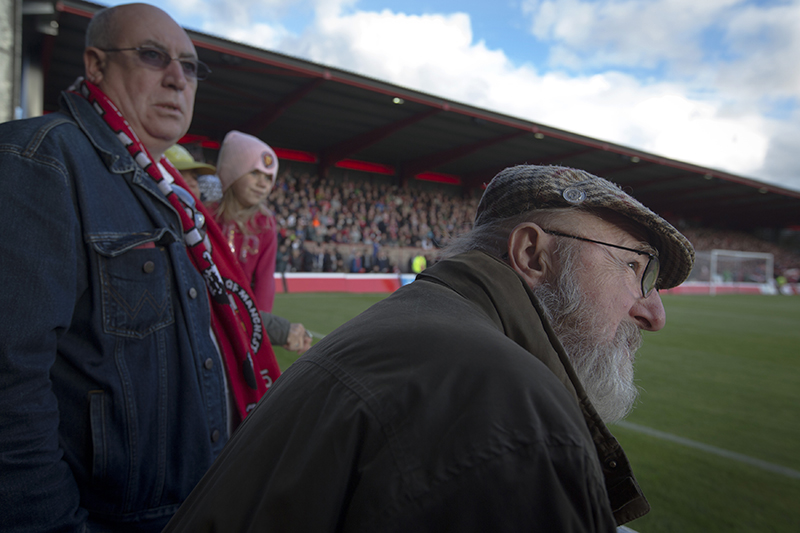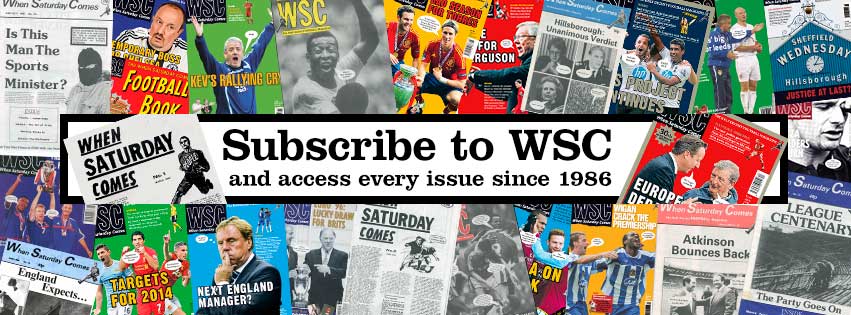
While non-League stadiums can regularly offer a throwback to football’s less corporate days, they are also a testing ground for the game’s innovations
5 November ~ As well as drawing attention to the world of football that exists beyond the Premier League and the EFL, one of the virtues of Non League Day, which will take place on October 13, is that it throws a spotlight on non-League football grounds. These invariably followed the same template as their Premier League and Football League peers, albeit on a miniaturised scale, before the advent of all-seat stadiums. The main difference was one of perception, which largely was due to the lack of coverage given to non-League football.
Turn up at a night match at Southern League Chelmsford City’s New Writtle Street ground in the 1970s and 1980s, and an instantly recognisable picture came into view. Under the blaze of towering floodlights, you were presented with the traditional vista of concrete terracing, sizeable grandstand and cavernous covered enclosure. At Worcester City’s St George’s Lane, you would find woven into the local landscape a venue still basking in the glow of the club’s famous FA Cup win against Liverpool in 1959, while anyone admiring the plentiful terracing at Nuneaton Borough’s Manor Park would nevertheless wonder at how a crowd of 22,114 managed to squeeze in for the FA Cup third round tie against Rotherham United in 1967. There were dozens of grounds like these up and down the land, repositories of history, and every bit as interesting and characterful as their more famous Football League counterparts.
Wind the clock on to 2018 however and the two worlds no longer align so readily. Though there has been some blurring due to the relegation of several long-standing League clubs into the National League, sharp differences have developed. Particularly in the Premier League, the option of spontaneously turning up for a game has disappeared. Tickets need to be bought days, and sometimes weeks, in advance, but at non-League level the opportunity to “walk up” at the last moment still applies. Furthermore, as the debate about introducing safe standing to the top two tiers of football rumbles on, standing up remains the default mode of watching football lower down, with little or no restrictions. Indeed, when FC United of Manchester were planning their new Broadhurst Park ground in 2015, emphasis was given to providing standing places, which resulted in the construction of a large paddock section in front of the grandstand and a tall covered terrace at one end.
The freedom to roam around the ground, to stand with one’s friends or move away from somebody’s irritating antics, is one of non-League football’s best selling points. If not quite a theme park dedicated to life before the Taylor Report, a visit to a non-League ground can offer a temporary respite from the tightly controlled environment of top-flight stadiums. The only regret is that a significant number of classic grounds have perished or been downsized in recent years, with Ebbsfleet United’s Stonebridge Road, perhaps the country’s purest example of an untouched post-war venue, currently undergoing extensive modernisation works.
Finally, no recent development has widened the chasm between the top four tiers and non-League football more than the drive towards 3G pitches. Though they are vastly superior to the bouncy green carpets that were installed at Loftus Road, Boundary Park, Deepdale and Kenilworth Road in the 1980s, there are still many that cling to the sanctity of grass and find the concept of artificial surfaces unpalatable. Nonetheless, the movement towards 3G pitches at all levels below the top 92 clubs is now inexorable. Such surfaces are currently being employed by National League sides Bromley, Harrogate Town, Maidstone United and Sutton United, while in the feeder divisions and below, the number of 3G pitches is increasing exponentially. Though they can never match the finest grass pitches – thereby dispensing with football staples such as the splatter of mud and the visceral thrill of a sliding tackle – matches on 3G pitches are rarely postponed and, due to their durability, are able to be used several times a week. For clubs searching for a regular revenue stream, 3G pitches are therefore a godsend, and despite costing around £600,000 to install, because of their community value hefty grants are often accessible. Any Premier League or EFL devotee visiting a 3G venue on Non League Day could well be staring into the future. Vince Taylor
Vince Taylor is the editor of Groundtastic
Photo by Colin McPherson/WSC Photos: FC United fans look on during their first match at their Broadhurst Park stadium
This article first appeared in WSC 380, November 2018. Subscribers get free access to the complete WSC digital archive – you can find out more here
